August 28, 2013
 The Mission Statement from the Common Core State Standards’ homepage states, “The standards are designed to be robust and relevant to the real world, reflecting the knowledge and skills that our young people need for success in college and careers.”
The Mission Statement from the Common Core State Standards’ homepage states, “The standards are designed to be robust and relevant to the real world, reflecting the knowledge and skills that our young people need for success in college and careers.”
Career education has been an important part of the school curriculum for many years and resources made available for young people to begin thinking about their lifepath begins early. Schools have provided a myriad of materials and career path identifiers to assist students along the way. This week the Children’s Literature and Reading Special Interest Group of IRA have reviewed new and recently published books with job and career emphasis for support to teachers who want to provide that sense of direction for young people in today’s career focused world in conjunction with IRA's International Literacy Day "Invent Your Future" theme.
Lesson plans that incorporate jobs and careers can be found at ReadWriteThink that include ideas like Create a Career Blog, Resume Generator, and book report alternatives.
GRADES K-2
Beaty, Andrea. (2013). Rosie Revere, Engineer. New York: Abrams.
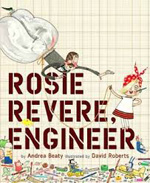 Written in rhymed couplets, the author/illustrator team that brought Iggy Peck, Architect (2007) to young readers are back with a story of a shy young girl gadget maker. Rosie has been collecting junk for a long time and has turned her attic into the place where she creates her odd assortment of gadgets and gizmos. However, when she makes her uncle, a zookeeper, a hat to ward off snakes, he just laughs and laughs. This is all it took for Rosie to hide her experiments and become very shy about even talking. When her great-great-aunt Rose comes to visit, students (via teachers) will recognize Rosie the Riveter of World War II fame. Rosie then decides to build a flying machine similar to today’s helicopters. However, it fails to stay in the air and Rosie is devastated and so discouraged she is ready to give up inventing. However, Great-great Aunt Rose is there to support her and actually congratulates her on the failure. Now she can go on and try something else to make it work. Rosie throws her hair over her eye and starts anew. Young readers will enjoy searching through all of Rosie’s junk and paraphernalia to decipher just what all those gadgets do. Visit the author’s website for more background on the book or friend Rosie on Facebook. Find a detailed teacher’s guide at the Abram’s website.
Written in rhymed couplets, the author/illustrator team that brought Iggy Peck, Architect (2007) to young readers are back with a story of a shy young girl gadget maker. Rosie has been collecting junk for a long time and has turned her attic into the place where she creates her odd assortment of gadgets and gizmos. However, when she makes her uncle, a zookeeper, a hat to ward off snakes, he just laughs and laughs. This is all it took for Rosie to hide her experiments and become very shy about even talking. When her great-great-aunt Rose comes to visit, students (via teachers) will recognize Rosie the Riveter of World War II fame. Rosie then decides to build a flying machine similar to today’s helicopters. However, it fails to stay in the air and Rosie is devastated and so discouraged she is ready to give up inventing. However, Great-great Aunt Rose is there to support her and actually congratulates her on the failure. Now she can go on and try something else to make it work. Rosie throws her hair over her eye and starts anew. Young readers will enjoy searching through all of Rosie’s junk and paraphernalia to decipher just what all those gadgets do. Visit the author’s website for more background on the book or friend Rosie on Facebook. Find a detailed teacher’s guide at the Abram’s website.
- Karen Hildebrand, Ohio Library and Reading Consultant
Belloni, Giulia. (2013). Anything is possible. Illus. by Marco Trvisan. Translated by Wiliam Anselmi. Toronto, ON: Owlkids.
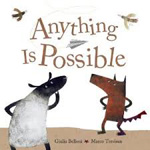 Math teachers looking for ways to introduce the importance of math in early childhood will want to take a close look at this book. Sheep is so envious of the birds flying overhead that she gets the idea to build a flying machine. Knowing that her “friend” Wolf is really good at mathematics, she takes the idea to Wolf and asks him to help with the project. Wolf isn’t so sure about this crazy idea but he gets busy with his ruler and protractor and starts to scribble mathematical equations and formulas all over the place. After several attempts, resignations, and failures, they are perplexed. Wings didn’t work and neither did helium balloons. With sparse text, the illustrations do a wonderful job at filling in the spaces for a young reader’s observation to take flight. Working together showing determination and perseverance, the two unlikely friends discover a solution that works. A short YouTube video book trailer will help introduce the book to young readers.
Math teachers looking for ways to introduce the importance of math in early childhood will want to take a close look at this book. Sheep is so envious of the birds flying overhead that she gets the idea to build a flying machine. Knowing that her “friend” Wolf is really good at mathematics, she takes the idea to Wolf and asks him to help with the project. Wolf isn’t so sure about this crazy idea but he gets busy with his ruler and protractor and starts to scribble mathematical equations and formulas all over the place. After several attempts, resignations, and failures, they are perplexed. Wings didn’t work and neither did helium balloons. With sparse text, the illustrations do a wonderful job at filling in the spaces for a young reader’s observation to take flight. Working together showing determination and perseverance, the two unlikely friends discover a solution that works. A short YouTube video book trailer will help introduce the book to young readers.
- Karen Hildebrand, Ohio Library and Reading Consultant
Christelow, Eileen. (2013). What do authors and illustrators do? Houghton Mifflin Harcourt.
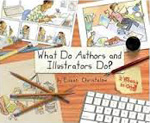 If this title sounds somewhat familiar, there is a reason for that. What do author do? was published in 1995, and What do illustrators do? was published in 1999. The publishers have brought the two books together to give young readers and aspiring writers a chance to see the entire creation of a picture book. Teachers can use this book to discuss how authors get ideas for their stories, how they write and revise until publication is accepted. Illustrators often start with sketches and thumbnails before they begin actual drawings in watercolors or acrylics. Getting a book to its final destination, that is, published is now together in one handy volume. A book trailer is available at YouTube, and the publisher’s website offers images teachers can use for further discussions.
If this title sounds somewhat familiar, there is a reason for that. What do author do? was published in 1995, and What do illustrators do? was published in 1999. The publishers have brought the two books together to give young readers and aspiring writers a chance to see the entire creation of a picture book. Teachers can use this book to discuss how authors get ideas for their stories, how they write and revise until publication is accepted. Illustrators often start with sketches and thumbnails before they begin actual drawings in watercolors or acrylics. Getting a book to its final destination, that is, published is now together in one handy volume. A book trailer is available at YouTube, and the publisher’s website offers images teachers can use for further discussions.
- Karen Hildebrand, Ohio Library and Reading Consultant
Engle, Margarita. (2013). When you wander: A search-and-rescue dog story. Illus. by Mary Morgan. New York: Macmillan.
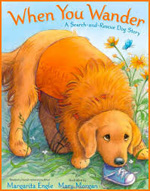 Not only does this book introduce children to the idea that dogs are often used for search and rescue efforts, but it offers tips for what to do if they get lost in the woods. The author suggests staying in one place and waiting for rescue instead of wandering further off. Instead of panicking and moving further from what seems to be familiar, she suggests they stay in one place and find a tree to hug. Meanwhile, specially-trained canines as well as humans are sure to be searching for them. Some children might be so intrigued by the work these dogs perform that they would like a career working with them. The simple text and watercolor, gouache, and colored pencil illustrations celebrate the gentle nature of these dogs while providing interesting facts about those noses.
Not only does this book introduce children to the idea that dogs are often used for search and rescue efforts, but it offers tips for what to do if they get lost in the woods. The author suggests staying in one place and waiting for rescue instead of wandering further off. Instead of panicking and moving further from what seems to be familiar, she suggests they stay in one place and find a tree to hug. Meanwhile, specially-trained canines as well as humans are sure to be searching for them. Some children might be so intrigued by the work these dogs perform that they would like a career working with them. The simple text and watercolor, gouache, and colored pencil illustrations celebrate the gentle nature of these dogs while providing interesting facts about those noses.
- Barbara A. Ward, Washington State University Pullman
Gregory, Helen. (2013). Places to work. Mankato, MN: Capstone Press.
 Large color photographs and simple text make this a book for early readers to learn about jobs and careers. With one sentence per page, this format allows children to take notice of people at various jobs and especially noting that in many cases, people work as teams to get things accomplished for best results. Website links are included as well as sections entitled “Now Try This” for extended activities. In addition, there is a section called “Note to Parents and Teachers” for further information.
Large color photographs and simple text make this a book for early readers to learn about jobs and careers. With one sentence per page, this format allows children to take notice of people at various jobs and especially noting that in many cases, people work as teams to get things accomplished for best results. Website links are included as well as sections entitled “Now Try This” for extended activities. In addition, there is a section called “Note to Parents and Teachers” for further information.
- Karen Hildebrand, Ohio Library and Reading Consultant
Guillain, Charlotte. (2013). Jobs if you like … Art. Chicago: Heinemann Library.
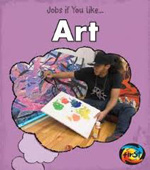 Opening with the heading, “Why Does Art Matter?” the first paragraph questions: "Do you love art? Or do you wonder what the point of art is? Art is important in the world around us. We see art every day, even if we don’t notice it." (p.1) The book continues as it describes a wide variety of jobs that have a basis in art. These topics include; animators, art therapy, photographers, exhibition designers, fashion designers, fine artists, interior designers, graphic designers, illustrators, and more. A very special feature at the end of the book entitled Art Job Chart (p. 28) displays a chart with these aspects of art and then 2 categories: You Need To and Best Thing About It that guide young artists to consider aspects of themselves and their compatible traits as they think about their futures in art. A glossary and web links are also included.
Opening with the heading, “Why Does Art Matter?” the first paragraph questions: "Do you love art? Or do you wonder what the point of art is? Art is important in the world around us. We see art every day, even if we don’t notice it." (p.1) The book continues as it describes a wide variety of jobs that have a basis in art. These topics include; animators, art therapy, photographers, exhibition designers, fashion designers, fine artists, interior designers, graphic designers, illustrators, and more. A very special feature at the end of the book entitled Art Job Chart (p. 28) displays a chart with these aspects of art and then 2 categories: You Need To and Best Thing About It that guide young artists to consider aspects of themselves and their compatible traits as they think about their futures in art. A glossary and web links are also included.
- Karen Hildebrand, Ohio Library and Reading Consultant
James, Simon. (2013). Nurse Clementine. San Francisco: Candlewick Press.
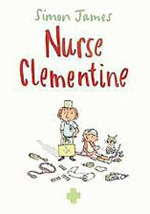 Clementine Brown has just received the very birthday present she had hoped for – a nurse’s kit complete with uniform, bag, and medical supplies. She starts her career when her father stubs his toe and she has him bandaged up in a jiffy with orders to stay off his toe for a week. When her mother gets a headache, she bandages her head and tells her the same, to rest for a week. Even Wellington the dog does not escape her ministrations as she bandages his paw when she is convinced it needs tending. It is only her brother Tommy that won’t allow her to attend to his medical emergencies as he roller skates down the stairs or bounces off furniture. However, the tables are turned when Tommy finds himself in a little mishap in the backyard tree and Clementine comes to his rescue. A color theme of yellow and subdued green and blue ink and watercolor illustrations with lots of white space, will put readers in mind of the artwork of Quentin Blake. Learn more about this British author at his website.
Clementine Brown has just received the very birthday present she had hoped for – a nurse’s kit complete with uniform, bag, and medical supplies. She starts her career when her father stubs his toe and she has him bandaged up in a jiffy with orders to stay off his toe for a week. When her mother gets a headache, she bandages her head and tells her the same, to rest for a week. Even Wellington the dog does not escape her ministrations as she bandages his paw when she is convinced it needs tending. It is only her brother Tommy that won’t allow her to attend to his medical emergencies as he roller skates down the stairs or bounces off furniture. However, the tables are turned when Tommy finds himself in a little mishap in the backyard tree and Clementine comes to his rescue. A color theme of yellow and subdued green and blue ink and watercolor illustrations with lots of white space, will put readers in mind of the artwork of Quentin Blake. Learn more about this British author at his website.
- Karen Hildebrand, Ohio Library and Reading Consultant
Wilbur, Helen. (2013). Finnegan and Fox: The ten-Foot cop. Illus. by John Manders. Ann Arbor, MI: Sleeping Bear Press.
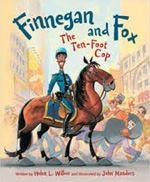 Meet ten-year-old Finnegan, a 1,256 pound professional wearing steel shoes! Finnegan, a horse, is a part of NYPD Mounted Unit. Together with Officer Fox, they form a splendid 10-foot cop pair. Finnegan’s rounds take him through one of the busiest districts in the world. The beat includes Times Square, through which a million and half people pass every day. Even among all those people, Finnegan is a celebrity. One day during their regular beat, Finnegan and Fox hear about a missing child. All foot searches have returned empty handed. Finnegan has a hunch. Could it be right? Readers who check out this delightful book will find out more about the sensitivity and intelligence of this professional pair. The book’s endearing words and its whimsical pictures and colorful spreads evoke a special mood that will make readers smile and linger. This is a perfect way to introduce non-traditional careers to young readers. Visit the author’s webpage for a coloring page and extra reading activities.
Meet ten-year-old Finnegan, a 1,256 pound professional wearing steel shoes! Finnegan, a horse, is a part of NYPD Mounted Unit. Together with Officer Fox, they form a splendid 10-foot cop pair. Finnegan’s rounds take him through one of the busiest districts in the world. The beat includes Times Square, through which a million and half people pass every day. Even among all those people, Finnegan is a celebrity. One day during their regular beat, Finnegan and Fox hear about a missing child. All foot searches have returned empty handed. Finnegan has a hunch. Could it be right? Readers who check out this delightful book will find out more about the sensitivity and intelligence of this professional pair. The book’s endearing words and its whimsical pictures and colorful spreads evoke a special mood that will make readers smile and linger. This is a perfect way to introduce non-traditional careers to young readers. Visit the author’s webpage for a coloring page and extra reading activities.
- Rani Iyer, Washington State University Pullman
GRADES 3-5
Biskup, Agnieszka. (2013). The amazing work of scientists with Max Axiom, super scientist. Illus. by Marcelo Baez. Mankato, MN: Capstone Press.
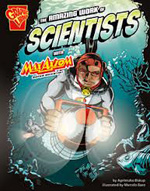 In the graphic novel format, author Agnieszka Biskup brings readers another title in this series, The Incredible Work of Engineers with Max Axiom, Super Scientist. Teachers looking for books that complement any STEM concepts and activities might find this book useful as Max Axiom explores science careers starting at a local university science lecture series. He is asked to help connect students with real scientists and so Max begins his quest. In Section 2, Max takes action and travels to places around the world to introduce a variety of science careers including astronauts, meteorologists, seismologists, microbiologists, marine scientists, zoologists, virologists, chemists, forensic scientists, and more. Section 3 finds Max back at the university to bring all these ideas together. Students who enjoy the graphic novel format will appreciate this informative look at careers in science.
In the graphic novel format, author Agnieszka Biskup brings readers another title in this series, The Incredible Work of Engineers with Max Axiom, Super Scientist. Teachers looking for books that complement any STEM concepts and activities might find this book useful as Max Axiom explores science careers starting at a local university science lecture series. He is asked to help connect students with real scientists and so Max begins his quest. In Section 2, Max takes action and travels to places around the world to introduce a variety of science careers including astronauts, meteorologists, seismologists, microbiologists, marine scientists, zoologists, virologists, chemists, forensic scientists, and more. Section 3 finds Max back at the university to bring all these ideas together. Students who enjoy the graphic novel format will appreciate this informative look at careers in science.
- Karen Hildebrand, Ohio Library and Reading Consultant
Coleman, Janet Wyman. (2013). Eight dolphins of Katrina: A true tale of survival. Illus. by Yan Nascimbene. New York: Houghton Mifflin Harcourt.
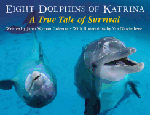 Children interested in natural disasters and true stories of animal and human survival may find this one inspiring, and it may even lead them to consider a career working with animals in some capacity. The book describes how eight dolphins left in the Marine Life Oceanarium in Gulfport, Mississippi during the onslaught of Hurricane Katrina in 2005 somehow managed to survive in the Gulf Coast waters for twelve days. Their trainers and the staff of the facility worked tirelessly to find them, even managing to obtain a boat and helicopter to aid in the rescue. The dolphins' home had been demolished by the storm's 40-foot tidal wave, but experts thought that they might have survived and be waiting nearby since they depended on their trainers for food. In a separate portion of the book, the author offers additional information about dolphins and how they have helped other species. While both parts of the book are interesting, the fine line and color wash illustrations that depict the disaster enable readers to understand that these weren't simply dolphins but breathing symbols of the Gulf Coast's ability to transcend a natural disaster. Young readers will enjoy the photos in the trainer's scrapbook at the end of the book.
Children interested in natural disasters and true stories of animal and human survival may find this one inspiring, and it may even lead them to consider a career working with animals in some capacity. The book describes how eight dolphins left in the Marine Life Oceanarium in Gulfport, Mississippi during the onslaught of Hurricane Katrina in 2005 somehow managed to survive in the Gulf Coast waters for twelve days. Their trainers and the staff of the facility worked tirelessly to find them, even managing to obtain a boat and helicopter to aid in the rescue. The dolphins' home had been demolished by the storm's 40-foot tidal wave, but experts thought that they might have survived and be waiting nearby since they depended on their trainers for food. In a separate portion of the book, the author offers additional information about dolphins and how they have helped other species. While both parts of the book are interesting, the fine line and color wash illustrations that depict the disaster enable readers to understand that these weren't simply dolphins but breathing symbols of the Gulf Coast's ability to transcend a natural disaster. Young readers will enjoy the photos in the trainer's scrapbook at the end of the book.
- Barbara A. Ward, Washington State University Pullman
Cox, Judy. (2013). Ukulele Hayley. Illus. by Amanda Haley. New York: Holiday House.
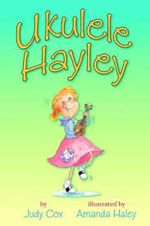 While many youngsters dream of musical careers, those dreams usually involve wailing guitars or pounding drums. Only rarely would a ukulele feature in rock star dreams, but even a humble instrument can enable someone’s creative side to flourish as evidenced in this story. Third grader Hayley Godwin is accustomed to being ignored or dismissed because of her age and size. But when she hears that her school’s planned talent contest, she desperately tries to identify her own talent. After buying a ukulele at a yard sale, she practices hard, enlists the help of the school music teacher, Mr. Y, and eventually inspires other classmates to join the fun. Suddenly, it seems as though everyone wants to learn to play the ukulele, making it the cool thing to do. Despite several obstacles, Hayley keeps playing and manages to surmount several roadblocks, even organizing a protest when the School Board cuts funding for music classes. Readers will find it hard not to like Hayley and applaud her persistence as she uses music to express herself and speak out on the things that matter. Not only is the story interesting, but the illustrations show depth to Hayley as she thinks about her great-great-great aunt Ruby who didn't let polio stop her from playing the instrument in front of an audience.
While many youngsters dream of musical careers, those dreams usually involve wailing guitars or pounding drums. Only rarely would a ukulele feature in rock star dreams, but even a humble instrument can enable someone’s creative side to flourish as evidenced in this story. Third grader Hayley Godwin is accustomed to being ignored or dismissed because of her age and size. But when she hears that her school’s planned talent contest, she desperately tries to identify her own talent. After buying a ukulele at a yard sale, she practices hard, enlists the help of the school music teacher, Mr. Y, and eventually inspires other classmates to join the fun. Suddenly, it seems as though everyone wants to learn to play the ukulele, making it the cool thing to do. Despite several obstacles, Hayley keeps playing and manages to surmount several roadblocks, even organizing a protest when the School Board cuts funding for music classes. Readers will find it hard not to like Hayley and applaud her persistence as she uses music to express herself and speak out on the things that matter. Not only is the story interesting, but the illustrations show depth to Hayley as she thinks about her great-great-great aunt Ruby who didn't let polio stop her from playing the instrument in front of an audience.
- Barbara A. Ward, Washington State University Pullman
Marcus, Leonard S. (2013). Randolph Caldecott: The man who could not stop drawing. New York: Farrar, Straus, and Giroux.
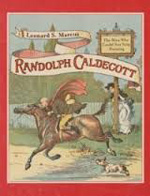 The Caldecott Medal, first awarded in 1938 to the artist for the most distinguished American children’s picture book, owes its name and inspiration to the illustrator who is the subject of this lively biography. Readers travel back in time for a glimpse of the life, times, and inspiration of Randolph Caldecott, born in 1846. Although he worked as a bank clerk in his hometown and later in Manchester, England, he spent his free time drawing, sketching, and observing those around him. After moving to London, Caldecott met several influential individuals who unlocked publishing opportunities for him. Before long, his illustrations embellished newspapers, magazines, and stories, notably those written by Washington Irving. Eventually, his artwork adorned his own books as well. Often in poor health, the talented artist died at the age of 39 while traveling in the United States with his wife. The book is filled with anecdotes about Caldecott's artistic talent and ability to capture movement as well as illustrations from his sketchbook and heretofore unpublished drawings. To read this book is to come away amazed once more—or for the first time—at an incredibly gifted and influential illustrator. Readers will certainly want to know more about Caldecott’s formative years while seeking out more of his work. Perhaps a future Caldecott Medal winner will be among this book’s awe-struck audience.
The Caldecott Medal, first awarded in 1938 to the artist for the most distinguished American children’s picture book, owes its name and inspiration to the illustrator who is the subject of this lively biography. Readers travel back in time for a glimpse of the life, times, and inspiration of Randolph Caldecott, born in 1846. Although he worked as a bank clerk in his hometown and later in Manchester, England, he spent his free time drawing, sketching, and observing those around him. After moving to London, Caldecott met several influential individuals who unlocked publishing opportunities for him. Before long, his illustrations embellished newspapers, magazines, and stories, notably those written by Washington Irving. Eventually, his artwork adorned his own books as well. Often in poor health, the talented artist died at the age of 39 while traveling in the United States with his wife. The book is filled with anecdotes about Caldecott's artistic talent and ability to capture movement as well as illustrations from his sketchbook and heretofore unpublished drawings. To read this book is to come away amazed once more—or for the first time—at an incredibly gifted and influential illustrator. Readers will certainly want to know more about Caldecott’s formative years while seeking out more of his work. Perhaps a future Caldecott Medal winner will be among this book’s awe-struck audience.
- Barbara A. Ward, Washington State University Pullman
Miller, Bobbi. (2013). Big River’s daughter. New York: Holiday House.
 Readers looking for action, swashbuckling adventure, and a sojourn as a pirate or ship caption are sure to be captivated by this piece of historical fiction. The author’s characters come to life through words and deeds during the 1800s when an earthquake causes the Mississippi River to flow backward. The main character, River Fillian, has spent most of her life on her father’s maritime vessels, roving up and down the Mississippi. She’s learned to be tough and brave and knows how to fend for herself; in fact, some might call her stubborn and consider her to be a bit of a rapscallion herself. When disaster strikes and her father and many of his crew and friends disappear during a fire, River is certain that he somehow managed to survive. Until he reappears, though, she knows she will have to avoid others who assume she knows the secret to the treasure her father must have hidden somewhere. But not everyone is dishonest. Readers will be relieved that Annie Christmas takes her under her wing and tries to protect her. Animal lovers will applaud her act of kindness toward Tiger, the mistreated circus cat that River ends up freeing. Anyone who loves lots of action set in the backdrop of historical fiction is likely to enjoy this title. Inhabited by those who would take advantage of a young orphan, New Orleans and its nearby swamps are not painted in a flattering light in this particular account, but there are details enough about the city to make readers want to learn more. The publisher has an accompanying teacher guide on their website.
Readers looking for action, swashbuckling adventure, and a sojourn as a pirate or ship caption are sure to be captivated by this piece of historical fiction. The author’s characters come to life through words and deeds during the 1800s when an earthquake causes the Mississippi River to flow backward. The main character, River Fillian, has spent most of her life on her father’s maritime vessels, roving up and down the Mississippi. She’s learned to be tough and brave and knows how to fend for herself; in fact, some might call her stubborn and consider her to be a bit of a rapscallion herself. When disaster strikes and her father and many of his crew and friends disappear during a fire, River is certain that he somehow managed to survive. Until he reappears, though, she knows she will have to avoid others who assume she knows the secret to the treasure her father must have hidden somewhere. But not everyone is dishonest. Readers will be relieved that Annie Christmas takes her under her wing and tries to protect her. Animal lovers will applaud her act of kindness toward Tiger, the mistreated circus cat that River ends up freeing. Anyone who loves lots of action set in the backdrop of historical fiction is likely to enjoy this title. Inhabited by those who would take advantage of a young orphan, New Orleans and its nearby swamps are not painted in a flattering light in this particular account, but there are details enough about the city to make readers want to learn more. The publisher has an accompanying teacher guide on their website.
- Barbara A. Ward, Washington State University Pullman
Neuschwander, Cindy. (2013). Sir Cumference and the off-the-chart dessert. Illus. by Wayne Geehan. Watertown, MA: Charlesbridge Publishing.
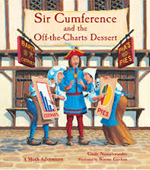 This humorous story offers one explanation for the origin of pie charts and bar graphs while serving up some possible mathematical or culinary career choices for youngsters. Two talented bakers compete for the honor of preparing the Harvest Sweet for an annual celebration. In order to determine the popular favorites as the townspeople taste their wares, both bakers keep tallies, one marked with lines in flour on a table and the other with pinches of dough. But their records are ruined by their cat and dog that respectively dash through the flour and gobble up the dough. Still, they need some way to record their patrons’ favorite choices and eventually come up with their own strategies that will be animal-proof. The male baker stacks cookie molds, one for each different type of cookie preferred by his customers, while the female baker arranges different colors of candies around a circular, pie shape to record the results. Thus, the results will be visual, and easy to understand. The story will hold readers' attention while the acrylic paint illustrations fit the story well. The relish with which the townsfolk and the animals savor the desserts is palpable. Math has never been so sweet.
This humorous story offers one explanation for the origin of pie charts and bar graphs while serving up some possible mathematical or culinary career choices for youngsters. Two talented bakers compete for the honor of preparing the Harvest Sweet for an annual celebration. In order to determine the popular favorites as the townspeople taste their wares, both bakers keep tallies, one marked with lines in flour on a table and the other with pinches of dough. But their records are ruined by their cat and dog that respectively dash through the flour and gobble up the dough. Still, they need some way to record their patrons’ favorite choices and eventually come up with their own strategies that will be animal-proof. The male baker stacks cookie molds, one for each different type of cookie preferred by his customers, while the female baker arranges different colors of candies around a circular, pie shape to record the results. Thus, the results will be visual, and easy to understand. The story will hold readers' attention while the acrylic paint illustrations fit the story well. The relish with which the townsfolk and the animals savor the desserts is palpable. Math has never been so sweet.
- Barbara A. Ward, Washington State University Pullman
Norwich, Grace. (2013). I am George Lucas. New York: Scholastic.
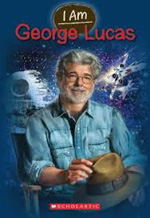 This easy-to-read title contains enough information about filmmaker George Lucas to encourage young readers to follow in his footsteps and possibly create their own films and studios. The father of blockbuster cinema series such as Star Wars and Indiana Jones, not to mention the music-filled American Graffiti, this talented, imaginative man somehow managed to make films his own way without compromising his vision. In a profession often dominated by connections, this quintessential outsider managed to do things his own way, staying true to his own vision for his films. Fans will enjoy seeing the photographs of a young Lucas as well as the lines of moviegoers waiting for tickets to his film as well as reading about his family, upbringing, and his struggles and failures as well as his successes. It’s interesting to learn about his single-mindedness and creativity.
This easy-to-read title contains enough information about filmmaker George Lucas to encourage young readers to follow in his footsteps and possibly create their own films and studios. The father of blockbuster cinema series such as Star Wars and Indiana Jones, not to mention the music-filled American Graffiti, this talented, imaginative man somehow managed to make films his own way without compromising his vision. In a profession often dominated by connections, this quintessential outsider managed to do things his own way, staying true to his own vision for his films. Fans will enjoy seeing the photographs of a young Lucas as well as the lines of moviegoers waiting for tickets to his film as well as reading about his family, upbringing, and his struggles and failures as well as his successes. It’s interesting to learn about his single-mindedness and creativity.
- Barbara A. Ward, Washington State University Pullman
Roche, Suzzy & Potter, Giselle. (2013). Want to be in a band? New York: Random House/Schwartz & Wade Books.
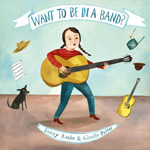 Who doesn’t want to be a part of a band? Being in a band takes some strategizing (like bribing your sisters to join you), some talent (someone who knows how to sing and play instruments), learning (yes, everyone should finally play in harmony), and hard work (yep, the age old saying, Practice! Practice! Practice! turns out to be true). This book leads readers through the steps of forming a band and the first public performance, which could be in the living room, but it is also sensitive to the psychological aspects of the music business. Themes such as stage fright, writing lyrics, picking out a band name, playing in the street corners, landing a first contract, rehearsals, concert tours, and handling poor public reviews are all introduced in appropriate contexts. But the biggest secret that holds the team together is neither talent nor money. It is the love the members of the band share for each other and for the music. The book is a must-read for all youngsters who dream of starting their own bands. Together, the illustrator and the author, who performed in a band with her sisters for more than 30 years, deliver a string of perfect notes in a title sure to have high reader appeal.
Who doesn’t want to be a part of a band? Being in a band takes some strategizing (like bribing your sisters to join you), some talent (someone who knows how to sing and play instruments), learning (yes, everyone should finally play in harmony), and hard work (yep, the age old saying, Practice! Practice! Practice! turns out to be true). This book leads readers through the steps of forming a band and the first public performance, which could be in the living room, but it is also sensitive to the psychological aspects of the music business. Themes such as stage fright, writing lyrics, picking out a band name, playing in the street corners, landing a first contract, rehearsals, concert tours, and handling poor public reviews are all introduced in appropriate contexts. But the biggest secret that holds the team together is neither talent nor money. It is the love the members of the band share for each other and for the music. The book is a must-read for all youngsters who dream of starting their own bands. Together, the illustrator and the author, who performed in a band with her sisters for more than 30 years, deliver a string of perfect notes in a title sure to have high reader appeal.
- Rani Iyer, Washington State University Pullman
GRADES 6-8
Davidson, Tish. (2013). African American scientists and inventors. Mason Crest Publishers.
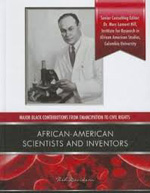 Part of the series, Major Black Contributions from Emancipation to Civil Rights, this volume focuses on the contributions of African-American scientists and inventors. Chapter headings like Computers or Integration reflect themes rather than individuals. In addition to well-known figures like George Washington Carver, other African Americans who are not so well known are included. People like Lonnie Johnson who invented the Super Soaker are included that lend information to inventions that deal with everyday life as well as leisure. Many of these inventor/scientists were not formally educated but had an idea that they developed into a lasting concept or invention. Many became rich from their ideas while others remain rather obscure. Throughout the highly illustrated book are “Did You Know” fact boxes that contain tidbits of information often in the form of trivia-like factoids. This well researched book concludes with chapter notes, a chronology, glossary, suggested reading, web links and an index.
Part of the series, Major Black Contributions from Emancipation to Civil Rights, this volume focuses on the contributions of African-American scientists and inventors. Chapter headings like Computers or Integration reflect themes rather than individuals. In addition to well-known figures like George Washington Carver, other African Americans who are not so well known are included. People like Lonnie Johnson who invented the Super Soaker are included that lend information to inventions that deal with everyday life as well as leisure. Many of these inventor/scientists were not formally educated but had an idea that they developed into a lasting concept or invention. Many became rich from their ideas while others remain rather obscure. Throughout the highly illustrated book are “Did You Know” fact boxes that contain tidbits of information often in the form of trivia-like factoids. This well researched book concludes with chapter notes, a chronology, glossary, suggested reading, web links and an index.
- Karen Hildebrand, Ohio Library and Reading Consultant
Eamer, Claire. (2013). Before the world was ready; stories of daring genius. Art by Sa Boothroyd. Annick Press.
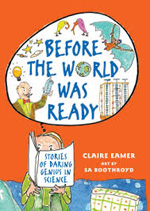 Take a moment and really consider the title of this book. (Pause.) History meets science as author Claire Eamer has researched the eras where many of these scientific ideas were considered idiocy at best. The book is organized by the concepts that were ridiculed or debated at their point in history. These concepts included: the earth revolving around the sun; the continents moving across the earth; hand-washing prevents the spread of disease; evolution; heavier-than-air objects can fly, i.e. aeroplanes; electicity; the first computer; pesticides effects on wildlife. Though readers will recognize these concepts and can quickly associate the scientist that championed each cause, the writing goes beyond the science and into the social and political mores of the time. Readers will grasp what these scientists had to deal with publicly to move their thinking forward. The eight scientists that are featured are: Copernicus, Alfred Wegener, Ignaz Semelweis, Charles Darwin, George Cayley, Nikola Tesla, Charles Babbage and Ada Lovelace, and Rachel Carson. Some names will be familiar while others will be surprising to readers. This intriguing and well-researched book brings a fresh insight into scientific discoveries that we thought we knew. Teachers will find this to be a great example of science and technical subjects in the CCSS connections to language arts. Enjoy a short book trailer with students to introduce the book and learn more about this Canadian science writer at her website.
Take a moment and really consider the title of this book. (Pause.) History meets science as author Claire Eamer has researched the eras where many of these scientific ideas were considered idiocy at best. The book is organized by the concepts that were ridiculed or debated at their point in history. These concepts included: the earth revolving around the sun; the continents moving across the earth; hand-washing prevents the spread of disease; evolution; heavier-than-air objects can fly, i.e. aeroplanes; electicity; the first computer; pesticides effects on wildlife. Though readers will recognize these concepts and can quickly associate the scientist that championed each cause, the writing goes beyond the science and into the social and political mores of the time. Readers will grasp what these scientists had to deal with publicly to move their thinking forward. The eight scientists that are featured are: Copernicus, Alfred Wegener, Ignaz Semelweis, Charles Darwin, George Cayley, Nikola Tesla, Charles Babbage and Ada Lovelace, and Rachel Carson. Some names will be familiar while others will be surprising to readers. This intriguing and well-researched book brings a fresh insight into scientific discoveries that we thought we knew. Teachers will find this to be a great example of science and technical subjects in the CCSS connections to language arts. Enjoy a short book trailer with students to introduce the book and learn more about this Canadian science writer at her website.
- Karen Hildebrand, Ohio Library and Reading Consultant
Kadohata, Cynthia. (2013). The thing about luck. New York: Atheneum.
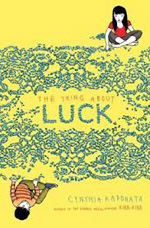 Careers and jobs start with a work ethic, and Newbery author Cynthia Kadohata has written about just how those ethics are established in children. Set in Kansas, Summer and her Japanese American family have had a year of bad luck. First, Summer comes in contact with a diseased mosquito and contracts malaria. Recovering from that, her parents are called away to Japan to assist with elderly family members. On top of that, Summer’s younger brother, Jaz, has personality problems of his own that include no friends. Summer and Jaz have been sent to live with their grandparents, Obaa-chan and Jii-chan who are forced to come out of retirement to work for the custom harvesting company in order to make their mortgage payment. Summer narrates the story through journal entries, diagrams and often humorous dialogue with her grandparents. Hard work and love of family are strong themes in this new book from an award-winning author. Visit the author’s website for more information and background on her writing.
Careers and jobs start with a work ethic, and Newbery author Cynthia Kadohata has written about just how those ethics are established in children. Set in Kansas, Summer and her Japanese American family have had a year of bad luck. First, Summer comes in contact with a diseased mosquito and contracts malaria. Recovering from that, her parents are called away to Japan to assist with elderly family members. On top of that, Summer’s younger brother, Jaz, has personality problems of his own that include no friends. Summer and Jaz have been sent to live with their grandparents, Obaa-chan and Jii-chan who are forced to come out of retirement to work for the custom harvesting company in order to make their mortgage payment. Summer narrates the story through journal entries, diagrams and often humorous dialogue with her grandparents. Hard work and love of family are strong themes in this new book from an award-winning author. Visit the author’s website for more information and background on her writing.
- Karen Hildebrand, Ohio Library and Reading Consultant
Krull, Kathleen. (2013). Lives of the scientists: experiments, explosions (and what the neighbors thought). Illus. by Kathryn Hewitt. Harcourt Children’s Books.
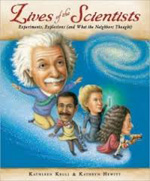 Part of the Lives of...series, this book focuses on 20 different scientists, starting with Zhang Heng who devised the world’s first seismometer, and ending with noted primatologist Jane Goodall. The brief biographies have been organized chronologically and contain basic information about each of these world-changers. But what has the most appeal for young readers is the inclusion of interesting facts that reveal the human side of each of these men and women. For instance, environmentalist Rachel Carson shared her house with cats that sprawled across her desk as she wrote, and cytogeneticist Barbara McClintock slept near her corn fields to protect them from raccoons. The oil paint illustrations feature large heads and smaller bodies for each of these scientists who were pioneers in their areas of study. The anecdotes that are provided humanize these larger-than-life individuals by revealing some of their mistakes and quirky characteristics. Particularly impressive is the author's inclusion of several women and scientists representing cultures other than her own. See her piece on "The Common Core: Showing Nonfiction the Love" on the Engage blog.
Part of the Lives of...series, this book focuses on 20 different scientists, starting with Zhang Heng who devised the world’s first seismometer, and ending with noted primatologist Jane Goodall. The brief biographies have been organized chronologically and contain basic information about each of these world-changers. But what has the most appeal for young readers is the inclusion of interesting facts that reveal the human side of each of these men and women. For instance, environmentalist Rachel Carson shared her house with cats that sprawled across her desk as she wrote, and cytogeneticist Barbara McClintock slept near her corn fields to protect them from raccoons. The oil paint illustrations feature large heads and smaller bodies for each of these scientists who were pioneers in their areas of study. The anecdotes that are provided humanize these larger-than-life individuals by revealing some of their mistakes and quirky characteristics. Particularly impressive is the author's inclusion of several women and scientists representing cultures other than her own. See her piece on "The Common Core: Showing Nonfiction the Love" on the Engage blog.
- Barbara A. Ward, Washington State University Pullman
Montgomery, Sy. (2013). The tapir scientist. Photographs by Nic Bishop. Houghton Mifflin.
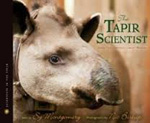 Award-winning author/photographer team Montgomery and Bishop are back with a new scientist to follow and a rare endangered mammal to study. Traveling to the back country wetlands of Brazil known as the Pantanal, the work of tapir scientist Patricia Medici (Pati) is explained through exquisite photographs and engaging narrative. The scientific team demonstrates how they tag and study the nocturnal tapirs in their own habitat. As the scientific team works to assist the gentle tapir’s survival, the author explains that if the tapirs vanish this could lead to the disappearance of the forests they help to germinate. Young readers will be fascinated with the high-tech gadgets used to track to animals to maintain their safety. The tapir story continues when a young British schoolboy named Benjamin spearheaded a campaign to raise funds to help protect this endangered species. As a result, one of the tagged tapirs was named in his honor. This book is another compelling addition to the Scientists in the Field series. More background information about the work of this author is available at her website or use this short video to learn more about the tapir scientist.
Award-winning author/photographer team Montgomery and Bishop are back with a new scientist to follow and a rare endangered mammal to study. Traveling to the back country wetlands of Brazil known as the Pantanal, the work of tapir scientist Patricia Medici (Pati) is explained through exquisite photographs and engaging narrative. The scientific team demonstrates how they tag and study the nocturnal tapirs in their own habitat. As the scientific team works to assist the gentle tapir’s survival, the author explains that if the tapirs vanish this could lead to the disappearance of the forests they help to germinate. Young readers will be fascinated with the high-tech gadgets used to track to animals to maintain their safety. The tapir story continues when a young British schoolboy named Benjamin spearheaded a campaign to raise funds to help protect this endangered species. As a result, one of the tagged tapirs was named in his honor. This book is another compelling addition to the Scientists in the Field series. More background information about the work of this author is available at her website or use this short video to learn more about the tapir scientist.
- Karen Hildebrand, Ohio Library and Reading Consultant
Robertson, Robbie. (2013). Legends, icons & rebels; music that changed the world. Tundra Books.
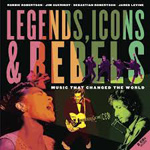 Written and designed to give young readers a look at music history, this beautifully prepared book, to be released October 8 along with two CDs, will appeal to a wide range of readers and music lovers. Writers Robbie Robertson (The Band), Jared Levine, and Sebastian Robertson have written about 27 legends of music. Tundra Publishers notes say, “Carefully compiled like any great playlist, the line-up features originators, rebels, and risk-takers across diverse genres.” Rock music, country and country western, folk songs, protest songs and more that span the years 1925 to 1968, the authors share short profiles of each musician including their difficulties in life and career as well as their achievements. Through the entire book, however, the power of music and how music can bring about change is artistically represented. The CDs include one song from each artist and the book contains a timeline and list of sources. Enjoy the Facebook page for this book.
Written and designed to give young readers a look at music history, this beautifully prepared book, to be released October 8 along with two CDs, will appeal to a wide range of readers and music lovers. Writers Robbie Robertson (The Band), Jared Levine, and Sebastian Robertson have written about 27 legends of music. Tundra Publishers notes say, “Carefully compiled like any great playlist, the line-up features originators, rebels, and risk-takers across diverse genres.” Rock music, country and country western, folk songs, protest songs and more that span the years 1925 to 1968, the authors share short profiles of each musician including their difficulties in life and career as well as their achievements. Through the entire book, however, the power of music and how music can bring about change is artistically represented. The CDs include one song from each artist and the book contains a timeline and list of sources. Enjoy the Facebook page for this book.
- Karen Hildebrand, Ohio Library and Reading Consultant
Sylvester, Kevin. (2013). Showtime: Meet the people behind the scenes. Toronto, ON: Annick Press.
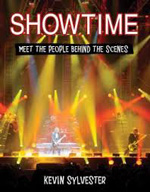 Many teens dream of fame and fortune and becoming stars on whom the stage spotlight falls. But as the author of this book points out, there are many individuals working behind the scenes at concerts, plays, and dance performances that bring the entire show together. Filled with photographs and interviews with individuals who are making a living working behind the scenes, this book may help readers set their sights on goals that are easier to achieve than worldwide fame. It features a choreographer, a vocal coach/set designer, a long-haul trucker, an instrument maker, a critic, a costume designer, an advertiser/designer, a pyrotechnics expert, a songwriter, and a promoter as well as six men and women who work behind the scenes at Rogers Arena in Vancouver to make sure everything goes according to plans. The author provides brief descriptions of each job, includes comments from someone who makes a living in this way, and then lists pros and cons as well as the particular skills each job requires. There are plenty of colorful photographs that show the importance of what goes on behind the scenes of a performance.
Many teens dream of fame and fortune and becoming stars on whom the stage spotlight falls. But as the author of this book points out, there are many individuals working behind the scenes at concerts, plays, and dance performances that bring the entire show together. Filled with photographs and interviews with individuals who are making a living working behind the scenes, this book may help readers set their sights on goals that are easier to achieve than worldwide fame. It features a choreographer, a vocal coach/set designer, a long-haul trucker, an instrument maker, a critic, a costume designer, an advertiser/designer, a pyrotechnics expert, a songwriter, and a promoter as well as six men and women who work behind the scenes at Rogers Arena in Vancouver to make sure everything goes according to plans. The author provides brief descriptions of each job, includes comments from someone who makes a living in this way, and then lists pros and cons as well as the particular skills each job requires. There are plenty of colorful photographs that show the importance of what goes on behind the scenes of a performance.
- Barbara A. Ward, Washington State University Pullman
Tashjian, Janet. (2013). My life as a cartoonist. Illus. by Jake Tashjian. New York: Henry Holt & Company.
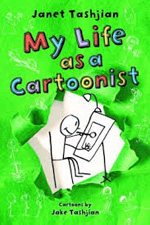 Twelve-year-old Derek Fallon has good intentions. The budding cartoonist is convinced that his new classmate, Umberto, could use some assistance from his own pet monkey, Frank, who could be trained to assist him. But even though Umberto is in a wheelchair, he isn't interested in being helped. In fact, as the story moves forward, Derek is the one who needs help since Umberto keeps making him the butt of his jokes and stealing his ideas for his own cartoon strips. It’s interesting to have a reversal of the bully role described here since readers might expect Umberto to be the one being bullied at school instead of the one doing the bullying. Although the two boys in this book have quite a lot in common, it takes a long time before they can realize that. Not only will readers and would-be cartoonists enjoy the storyline and interactions between Umberto and Derek, but the illustrations of vocabulary words on the side add even more humor and insight into human nature to the book.
Twelve-year-old Derek Fallon has good intentions. The budding cartoonist is convinced that his new classmate, Umberto, could use some assistance from his own pet monkey, Frank, who could be trained to assist him. But even though Umberto is in a wheelchair, he isn't interested in being helped. In fact, as the story moves forward, Derek is the one who needs help since Umberto keeps making him the butt of his jokes and stealing his ideas for his own cartoon strips. It’s interesting to have a reversal of the bully role described here since readers might expect Umberto to be the one being bullied at school instead of the one doing the bullying. Although the two boys in this book have quite a lot in common, it takes a long time before they can realize that. Not only will readers and would-be cartoonists enjoy the storyline and interactions between Umberto and Derek, but the illustrations of vocabulary words on the side add even more humor and insight into human nature to the book.
- Barbara A. Ward, Washington State University Pullman
GRADES 9-12
Cook, Colleen Ryckert. (2013). Dream jobs in coaching. New York:Rosen Publishing.
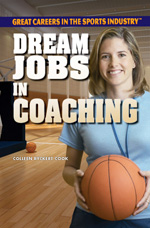 Coaching kids in Little League Baseball or coaching varsity college athletics or coaching in the professional athlete arena provides a range of coaching possibilities. Preparing for those coaching jobs and responsibilities is explained in this volume of the Sports Industry series from Rosen Publishers. This book is a career guide to young readers who are thinking of entering the sports field professionally and includes resources to assist young people heading toward this career path. A variety of schools and programs are offered for readers to explore, as they want to learn more about planning and preparing for the coaching profession. For information on the other books in this series, visit the publisher’s website. (Also in the Great Careers in the Sports Industry series: Sports Fitness & Medicine; Sports Management & Administration; Sports Marketing.)
Coaching kids in Little League Baseball or coaching varsity college athletics or coaching in the professional athlete arena provides a range of coaching possibilities. Preparing for those coaching jobs and responsibilities is explained in this volume of the Sports Industry series from Rosen Publishers. This book is a career guide to young readers who are thinking of entering the sports field professionally and includes resources to assist young people heading toward this career path. A variety of schools and programs are offered for readers to explore, as they want to learn more about planning and preparing for the coaching profession. For information on the other books in this series, visit the publisher’s website. (Also in the Great Careers in the Sports Industry series: Sports Fitness & Medicine; Sports Management & Administration; Sports Marketing.)
- Karen Hildebrand, Ohio Library and Reading Consultant
Jenks, Andrew. (2013). My adventures as a young filmmaker. New York: Scholastic.
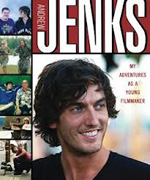 This highly visual and somewhat biographical look at Andrew Jenks will appeal to fans of MTV as Jenks created the popular “World of Jenks.” His journey into becoming a filmmaker started in middle school. After high school he attended NYU as a film student but dropped out. He moved about until he came up with a documentary film on baseball coach Bobby Valentine and his move to Japan. He has gone on to create several films based on interesting people and characters out of the mainstream of society; a young teen with autism or the resident of an assisted-living facility. Through photos and quips readers will get a look into the career of a young filmmaker blazing a path for his self-made style of creative film art. Teens will enjoy the video interview with The Hollywood Reporter and Andrew Jenks or do a little extra research on Jenks at the MTV website.
This highly visual and somewhat biographical look at Andrew Jenks will appeal to fans of MTV as Jenks created the popular “World of Jenks.” His journey into becoming a filmmaker started in middle school. After high school he attended NYU as a film student but dropped out. He moved about until he came up with a documentary film on baseball coach Bobby Valentine and his move to Japan. He has gone on to create several films based on interesting people and characters out of the mainstream of society; a young teen with autism or the resident of an assisted-living facility. Through photos and quips readers will get a look into the career of a young filmmaker blazing a path for his self-made style of creative film art. Teens will enjoy the video interview with The Hollywood Reporter and Andrew Jenks or do a little extra research on Jenks at the MTV website.
- Karen Hildebrand, Ohio Library and Reading Consultant
These reviews are submitted by members of the International Reading Association's Children's Literature and Reading Special Interest Group (CL/R SIG) and are published weekly on Reading Today Online. The International Reading Association partners with the National Council of Teachers of English and Verizon Thinkfinity to produce ReadWriteThink.org, a website devoted to providing literacy instruction and interactive resources for grades K–12.